
views
Managing a Tight Foreskin
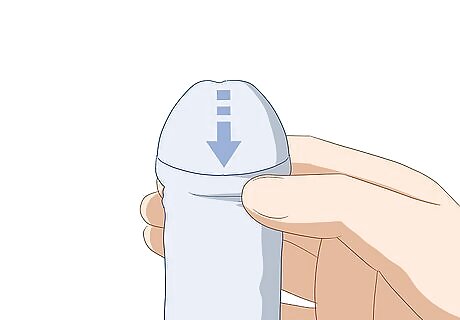
Pull back your foreskin slowly and gently. In most cases, it's easy to use your fingers to slide your foreskin back and expose the head of your penis. If, however, you have a tighter-than-average foreskin, slide the foreskin back more slowly and deliberately to reduce pain and the chance of injury. If you feel pain (not just discomfort), stop trying to pull back your foreskin. You could cause a painful tear in the sensitive skin. Move on to trying methods to loosen the foreskin. A tight foreskin is known as phimosis. It's common for a child's uncircumcised penis to have this condition, but it typically goes away during adolescence. It can be an issue for adults as well, though. You can stretch your foreskin up to twice a day.

Retract your foreskin during a shower or bath. The warm water and moist air will help to soften and loosen the foreskin. Work slowly and carefully with your fingers to guide the foreskin back onto the shaft of your penis. As a teen or adult, you should clean beneath your foreskin every time you bathe anyway. Pull the foreskin back, use a mild soap and lots of water to gently clean the area, rinse thoroughly, and guide the foreskin back into position.
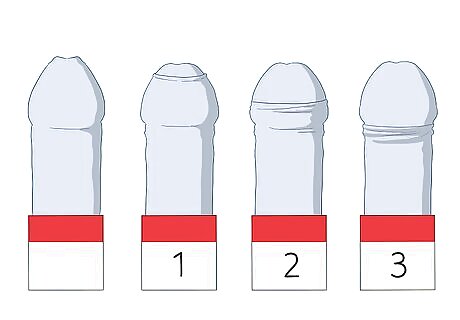
Pull a tight foreskin back incrementally over days or weeks. If you cannot retract your foreskin fully without pain because it's too tight, try slowly stretching it out. On the first day, gently pull the foreskin back until you feel discomfort. The next day, gently pull it slightly further back, and keep doing so once or twice per day for up to several weeks. Over time, this process will typically stretch out the foreskin and make it easier and more comfortable to pull back.
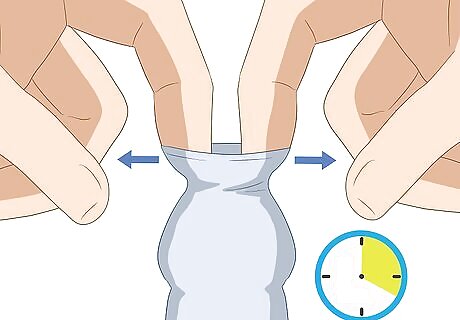
Try more intensive foreskin-stretching exercises if needed. If the incremental approach isn't helping enough, try a more dedicated stretching program. If the ring at the tip of your foreskin is tight, use your fingers to gently stretch it wider for 20-30 seconds at a time. If other areas of your foreskin are tight, you can similarly use your hands to gently stretch those areas. Do the exercises for 3-5 minutes, up to 3 times per day. It could take several weeks to a year or more to get noticeable results. You might also consider using a “flesh tunnel,” which is a silicone ring you place under the top ring of your foreskin for a few hours at a time each day. The device will help to incrementally stretch the foreskin. Stop the exercises if you experience pain, redness, or bleeding. Talk to your doctor for guidance.
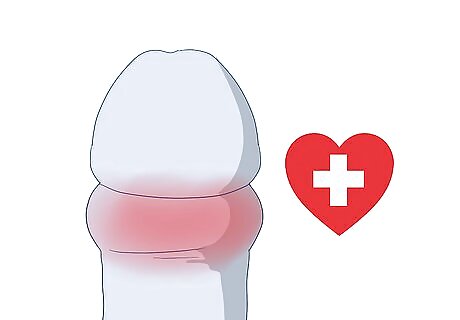
Consult your doctor for guidance on a painfully-tight foreskin. If stretching exercises don't help you retract your foreskin without pain, or if you deal with recurring redness, swelling, or discharge, talk to your doctor. They'll present you with appropriate medical treatment options. They may prescribe a topical steroid cream for you to apply daily. Topical steroids help to stretch the foreskin. If you have an infection because of a tight foreskin, you might be prescribed an antifungal cream or antibiotics. In some cases, circumcision—the surgical removal of the foreskin—might be recommended as the best option. For adults, this is typically a quick procedure done under local anesthesia, with a healing time of 1 to 2 weeks.
Caring for a Child's Foreskin
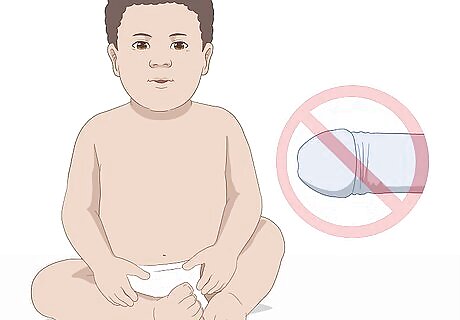
Do not force a child's foreskin to retract. At birth, and often for several years afterward, most or all of the foreskin usually remains attached to the head of the penis. The foreskin normally detaches from the penis tip (so that it can be retracted) by age 5, but it can take until puberty in some cases. Until that time, don't try to forcibly pull back a foreskin that is still attached. Forcibly pulling back an attached foreskin will cause a great deal of pain and can lead to skin tears, bleeding, scarring, and possibly nerve damage.
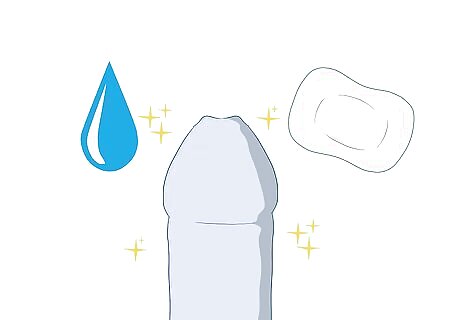
Don't worry about cleaning under a pre-pubescent child's foreskin. Before puberty, you generally don't need to pull back the foreskin to clean beneath it, even if it has detached from the head of the penis. Cleaning the outer surface of the penis regularly with a mild soap and clean water is sufficient under normal circumstances. If smegma buildup is causing odor or discomfort, and the foreskin has detached so that it can be pulled back, go ahead and start cleaning beneath it. If smegma buildup is creating discomfort under a foreskin that hasn't yet detached, talk to a doctor for guidance.
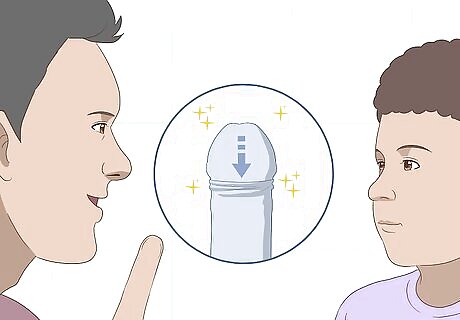
Teach the child to keep the foreskin clean once it can be pulled back. Once the foreskin detaches from the head of the penis and can be retracted, demonstrate proper cleaning technique to the child. Advise them to slowly pull back the foreskin to expose the penis head while bathing or showering. After they pull back the foreskin, instruct them to gently wash the penis head and underside of the foreskin with a mild soap, rinse the area thoroughly with clean water, and slide the foreskin back into place.
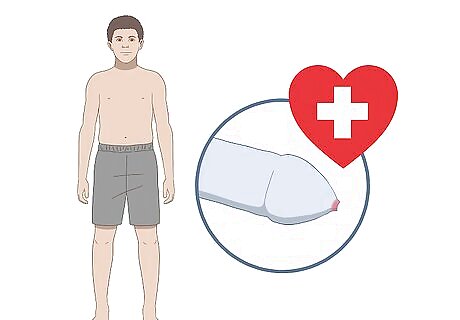
Consult a doctor if the foreskin won't retract after the onset of puberty. If a child's foreskin is still connected to the penis head after puberty begins, or if they can't retract it because it's too tight (phimosis), make an appointment with their doctor. The doctor might recommend foreskin stretching exercises, prescribe topical steroids, or simply advise a wait-and-see approach. In rare cases, circumcision may be recommended as the best course of action for severe phimosis.
Addressing Other Foreskin Problems
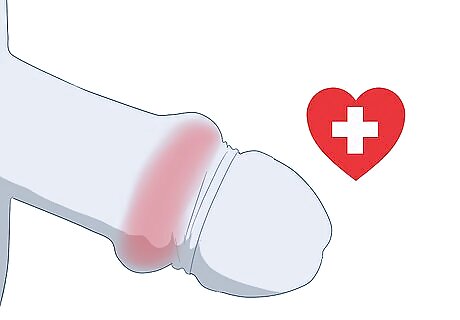
Get medical help if your foreskin is stuck in a retracted position. If you pull back your foreskin, exposing the head of your penis, but then are unable to slide the foreskin back over the head, you have a condition called paraphimosis. Because the retracted foreskin can cut blood flow to the tip of the penis, you should call your doctor or visit the hospital right away. Taking a warm shower may help soften and expand the foreskin enough to solve the problem, but don't be too forceful in trying to slide the foreskin back in place. You could cause the skin to tear or other damage.

Wash your penis regularly to prevent a buildup of smegma. Smegma is nothing more than a buildup of shed skin cells underneath the foreskin. If you don't clean beneath your foreskin regularly, though, the smegma can develop a mucus-like texture and unpleasant odor, and can harbor bacteria that can lead to infection. Teens and adults should clean beneath their foreskins every time they bathe or shower, using a mild soap and plenty of rinsing water. Younger children generally don't have to worry about smegma buildup, unless there is inflammation or discharge. In this case, see a doctor.
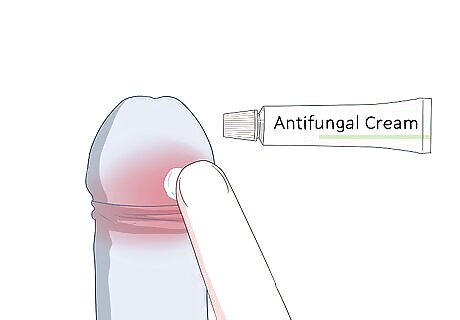
Use topical medications to treat redness or inflammation. If you experience redness and/or inflammation on the underside of your foreskin, the tip of your penis, or both, a fungal infection is the most likely culprit. Apply an over-the-counter antifungal cream to the area (as per the product instructions) to see if the issue clears up within a few weeks. If OTC antifungals don't help, or if the area becomes more painful, inflamed, or swollen, contact your doctor. Applying hydrocortisone cream can help you stretch your foreskin. Ask your doctor about a 1 month topical steroid treatment.
















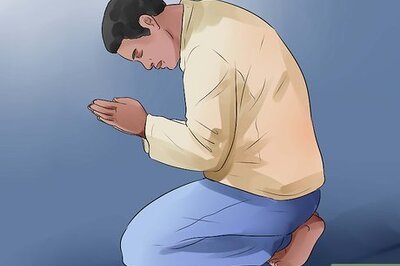



Comments
0 comment